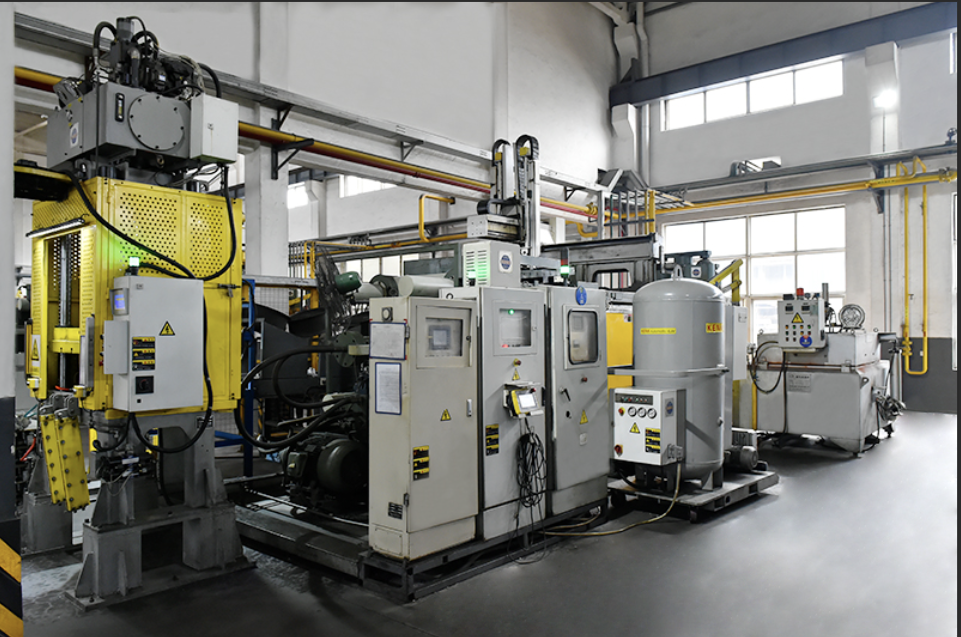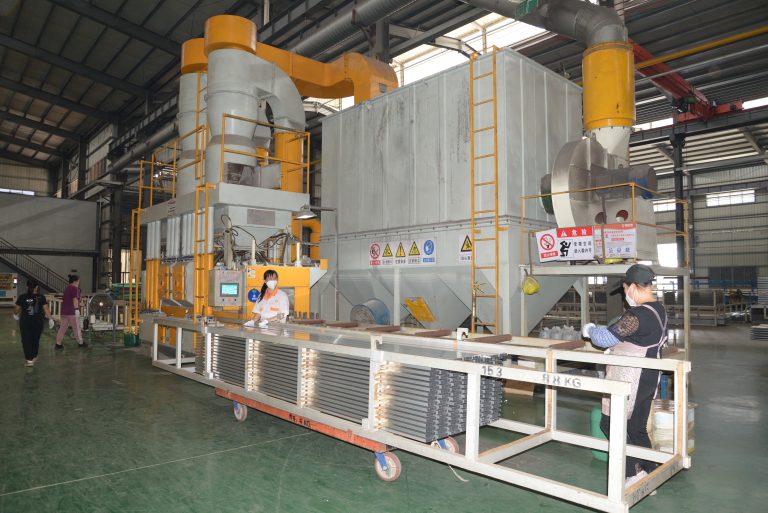Extruded aluminum vs. Die-cast aluminum: what’s the difference?

If you’re exploring manufacturing options with aluminum, you may need to determine which processing or forming method to use. Die casting and aluminum extrusion are two of the main contenders, but what is the difference between cast and extruded aluminum? Before we can compare them, we first need to know what are cast and extruded aluminum processes?
What is Die Casting?
Die-cast aluminum products are made by melting an aluminum ingot, using a piston to inject the molten metal into a die, and then allowing the aluminum to solidify into the shape inside the die as it cools. This process is not only used for aluminum; it can also be used for zinc and copper metal processing.
The process has these following steps to accomplish:
1. Preparation
Before the die casting process can begin, the mold must be prepared. This is done by heating the mold until it reaches a certain temperature and then covering the mold with a refractory coating/lubricant. Once this is done, the mold halves are closed and clamped together with high pressure.
2. Pouring of Aluminum:
The molten aluminum alloy is removed from the furnace and injected into the cavity of the mold by means of a robot or a transfer line. This process requires precise control of the pouring speed and temperature to ensure that the aluminum metal fills the mold cavity evenly and completely.
3. Cooling:
After the molten metal is poured into the casting, the molten aluminum cools rapidly in the mold and solidifies into shape. Cooling systems for molds are often used to speed up this process to increase productivity.
4. Ejecting the mold:
After complete cooling, the cured die casting is ejected from the mold using a tool. This step is performed carefully and slowly to avoid damage to the part or the mold.
5. Finishing die castings
When we take out the aluminum die casting the final work is not done because the scrap metal left in the runner, gate or sprue is still left on the surface of the die casting. We need to use polishing machine, cutting machine to remove the excess to get the final product.
What is extruding?
Extrusion is a metal forming technique that, unlike die casting, is only applicable to longer parts, including C-shaped, W-shaped, round and rectangular tubes. Extruded aluminum products are made by applying pressure to a heated aluminum billet as it passes through a die to produce the desired cross-section. Complex cross-sections, such as window and door frames, can be extruded by designing different extrusion dies.
Belows video from Hugh aluminum extrusion processing shows:
1.Preparation:
First, the extrusion die needs to be prepared and preheated, usually to 450-500 degrees Celsius to ensure alloy life and uniform metal flow. The preheated die is loaded onto the extruder.
2. Transfer Billet to the extruder:
The preheated aluminum billet is mechanically moved to the extruder and a lubricant (release agent) is applied to the billet and ram to prevent them from sticking together.
3. Extrusion process:
In the extruder, a hydraulic ram applies up to 800-20,000 tons of pressure (depending on the extruder model and product size) to push the aluminum billet into the extruder’s container and extrude it through the die. During this process, the aluminum material deforms plastically under the continuously applied pressure to form the desired contoured shape.
4. Cooling and Straightening:
The extruded aluminum profile exits the press smoothly through the puller and is cooled uniformly by means of a water bath or fan as it moves along the runout table to ensure its shape stability. The cooled aluminum profile may also need to be stretched or straightened, which ensures that the resulting extruded aluminum is not bent.

Which process is the best for your requirement?
Both die casting and aluminum extrusion have excellent advantages and some disadvantages that make them satisfactory for certain projects. If you are still not sure which one to choose, then you can look at the points listed below:
Die Casting Aluminum:
- More complex shapes are created than extruded aluminum, and some complex automotive parts or electronic parts require die casting. Aluminum die casting produces parts with high precision, up to IT11-13 grade, and even up to IT9 grade. Errors and tolerances can be reduced to 0.04mm.
- Not limited to long finished products, die casting can create larger finished products or irregular aluminum parts.
- Die-cast aluminum is stronger because of the integrated die-casting technology, which eliminates the need for welded and riveted structures. Machining high-impact cache parts using the die casting process is an excellent option.
- Die casting molds are expensive and time-consuming to manufacture, and they can cost twice as much or more than extrusion molds.
- The work hardening that occurs during the molding process enhances the strength of the final product.
- Cannot meet some design requirements, such as ellipsoidal sphere parts or pentagonal solids.
Aluminum Extrusion:
- The size of the finished product is limited by the size of the aluminum billets.
- The surface is very smooth and is decorative as an aluminum frame.
- It is a flexible metalworking process with a manufacturing lead time of typically 15-30 days (depending on quantity and product size). If you need to dominate the market quickly, extruded aluminum process would be a good choice!
- Extrusion molds are less costly than die casting molds, and the difficulty of designing a mold is lower than die casting. Because the extrusion mold can be divided into three parts, such a structure reduces the cost of mold design.
- High efficiency: Aluminum extrusion process can achieve continuous production, high production efficiency, suitable for mass production
- A highly adaptable process with relatively little effort or notice needed to make changes.
- Generally a less expensive process. The lower setup cost also makes it more suited to short production runs.
ln conclusion
Die casting and extrusion are both optimal solutions for the manufacture of aluminum products. Extruded aluminum would be a good choice if you are on a low budget and require less precision in your parts. And die casting produces a part that can help you save money on subsequent assembly because it can be done in one integrated die casting.
The final choice depends on the goals and needs of the project, as the advantages of each type of machining are different. If you are looking for extruded aluminum manufacturers —— Hugh Aluminum can provide you with excellent aluminum extrusions! Don’t hesitate to contact us!
Hugh Aluminum is an aluminum extrusion manufacturer based in China. We manufacture aluminum profiles including aluminum tube, aluminum T-slot, aluminum decking, aluminum fence, aluminum doors and windows frame,aluminum roofings. We offer large quantity of aluminum building materials and factory price.







